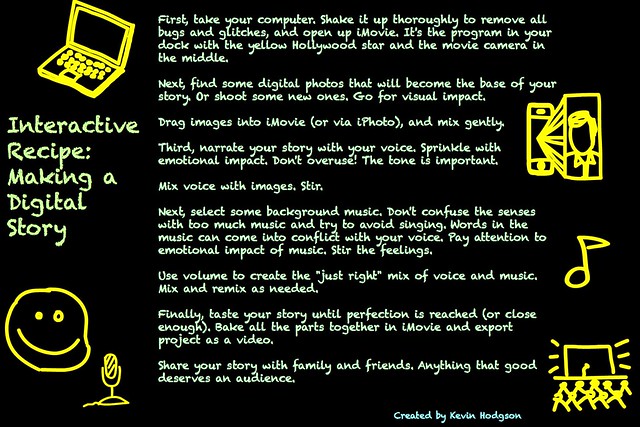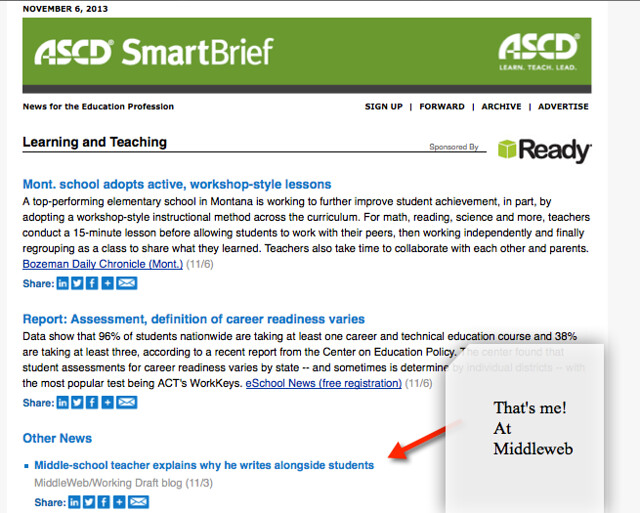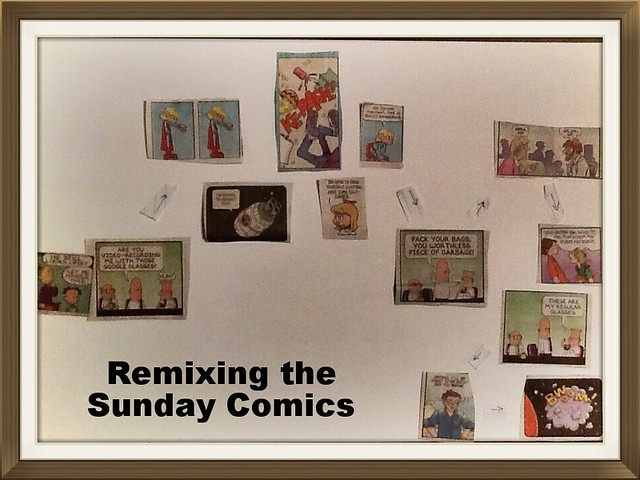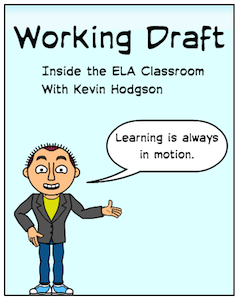Yesterday, I shared out a video that I created for the Make/Hack/Play mini-course I am involved in at P2PU with facilitator Karen Fasimpaur. Today, I wanted to explain just how I did it — so consider this is a sort of process piece connected to the Make itself in which I sought to Make a Song, and Make the songwriting visible. Here, I try to make the process visible. I also created this diagram flowchart of my process.
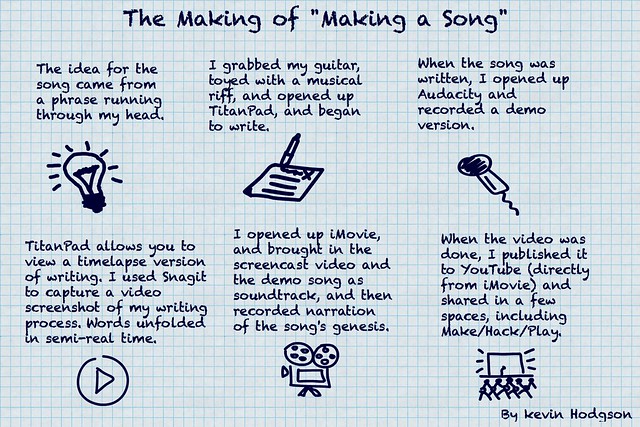
For the first week, Karen suggested we make something in physical space, but I had my head wrapped around music this past weekend, and I decided that I would write a new song, but with the idea of the Maker Space in mind. What I did was sat next to the computer with my guitar and instead of my usual method of scribbling out notes and crossing out words on paper, I used the collaborative freeware tool TitanPad to write. TitanPad works sort of like Google Docs as a collaborative space, but the element that I really love is that it creates a revision timeline video format (of sorts), so you can watch a piece of writing unfold over time.
After finishing the song, which is called Set My Anchor on You, I played back my words, watching from the distance as my words were written, removed, revised and restructured. It’s pretty fascinating, particularly for someone like me who types very fast but also makes a lot of mistakes. You can see a lot of backspacing going on.
Since my idea of this Make was to capture the songwriting in process, I took a video screenshot (using my Snagit program) of the words flowing on the screen, and then moved that raw video into iMovie, so I could layer in my narration. I also recorded a version of the song in Audacity, created an MP3 file and used that as the background track – so you watch my words, hear my thinking and listen to the song.
I then edited the video in iMovie and shared out at YouTube, and linked into our Make/Hack/Play space and beyond, thus going from brainstorm to writing to recording to publishing in a short amount of time.
Peace (in the song),
Kevin
